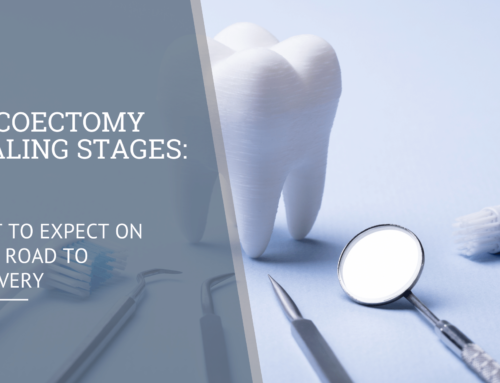An apicoectomy, often the final resort to save a tooth after a root canal has failed, involves the surgical removal of the tooth’s apex (or tip) and the surrounding infected tissue. This specialized procedure, while sounding daunting, is a common and effective way to treat persistent infections in the root canal system. One of the most common questions patients have about this treatment is regarding the healing time. Understanding the healing process and what to expect can significantly ease any apprehensions you might have. Let’s dive into the details of the healing time for apicoectomy and tips to ensure a smooth recovery.
What to Expect Immediately After an Apicoectomy
Right after the procedure, it’s normal to experience some discomfort and swelling, which typically peaks within the first 48 to 72 hours. Your endodontist will likely prescribe pain medication to manage any discomfort, and you might also be advised to use an ice pack to help minimize swelling. It’s important to follow these instructions carefully to manage your symptoms effectively.
The First Week of Healing
In the first week following your apicoectomy, you should see a significant decrease in swelling and discomfort. It’s crucial during this period to follow your endodontist’s post-operative care instructions meticulously. These guidelines often include avoiding strenuous activities, not disturbing the surgical site, and adhering to a soft food diet to prevent any irritation or damage to the area.
Two to Four Weeks After Surgery
By this stage, the majority of patients notice a considerable reduction in symptoms. Minor bruising may still be present, but it will gradually fade. Continuing to practice good oral hygiene is vital, but you should be gentle around the surgical site to avoid disrupting the healing process. It’s also a good time to start reintroducing your regular diet, as long as you’re comfortable and it doesn’t cause any pain at the surgical site.
Full Healing and Recovery
The complete healing process, including bone regeneration at the site of the surgery, can take anywhere from three to six months. However, you should be able to resume your normal daily activities, including work and exercise, within one to two weeks after the procedure, as long as you feel up to it and it’s approved by your endodontist.
During your recovery, your endodontist will schedule follow-up visits to monitor the healing process and ensure that the infection has been successfully eradicated. It’s crucial to attend these appointments and communicate any concerns or unusual symptoms you may experience.
Tips for a Smooth Recovery
- Follow post-operative instructions: Adhering to the care plan provided by your endodontist is essential for a successful recovery.
- Eat soft foods: To avoid irritation, stick to soft, easy-to-chew foods for the first few days post-surgery.
- Practice good oral hygiene: Keeping your mouth clean is crucial, but be gentle around the surgical site to avoid disturbing the healing tissue.
- Rest and avoid strenuous activities: Give your body the time it needs to heal by taking it easy, especially in the first few days following the procedure.
Conclusion
While the thought of undergoing an apicoectomy might be intimidating, understanding the healing process can help alleviate concerns. Knowing what to expect during each stage of recovery and following the tips provided can lead to a more comfortable and quicker healing period. Remember, an apicoectomy is a routine procedure performed by endodontists to save teeth that might otherwise need to be extracted. With the right care and a bit of patience, you’ll be on your way to a healthier smile in no time.





Leave A Comment